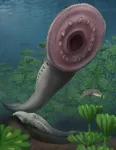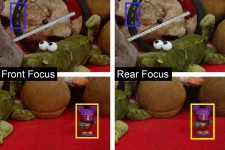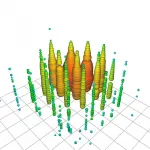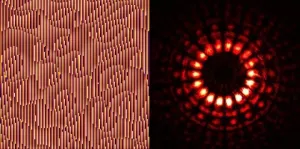(Press-News.org) The cryptocurrency market has been abuzz as Bitcoin gains popularity with investors, reaching an all-time high of over $58,000 apiece in February. In a commentary published March 10 in the journal Joule, financial economist Alex de Vries quantifies how the surging Bitcoin price is driving increasing energy consumption, exacerbating the global shortage of chips, and even threatening international safety.
Theoretically, any computer with access to the internet and electricity can "mine" Bitcoin, a process to receive cryptocurrency by solving sophisticated mathematical equations. It is estimated that all miners combined make over 150 quintillion--that is 18 zeros following 150--attempts every second to solve the equation, according to numbers from January 11, 2021. Computational power and electricity cost become crucial to profiting from Bitcoins.
"If you're a Bitcoin user making transactions, you're not the one directly paying for electricity. It's a bit of a hidden cost from a user perspective," says author Alex de Vries, the founder of Digiconomist (@DigiEconomist), a blog that highlights new digital trends such as cryptocurrency.
The hidden cost goes beyond energy consumption. Based on the Bitcoin price in January, de Vries estimated that the entire Bitcoin network could consume up to 184 TWh per year, close to the amount of energy all data centers consumed globally. The consumed energy also results in 90.2 million metric tons of CO2, comparable to the carbon footprint of metropolitan London.
"That's a pretty mind-blowing number," says de Vries. "Those data centers serve the most of global civilization, and then there's Bitcoin, which serves almost no one but still manages to consume about an equal amount of electricity."
The market price of Bitcoin is an incentive for miners to invest in hardware and electricity. As the price rises, more people put in orders to purchase and run the hardware, causing an increase in energy consumption, and vice versa when the price drops. Due to the overwhelming demand, hardware manufacturers have reported that their devices are sold out, and some customers may not receive their orders until later. This suggests that the amount of energy consumption is "locked in" at the time of purchase.
"The price of Bitcoin can crash by 25%, 30%, and you may still end up at the same energy consumption point because of the lock-in effect," says de Vries. "The whole idea of my article is to translate what the skyrocketing Bitcoin price is going to mean, not just for the environment, but also externalities that go beyond that."
Bitcoin mining rigs' short shelf-life can mean a substantial amount of electronic waste in the coming years. Mining devices also exacerbate the current global chip shortage by competing for the same chips as personal electronics and electric vehicles, which play an essential role in combatting climate change. Countries with inexpensive electricity, such as Iran, can introduce new revenue streams though Bitcoin mining.
"You can do a lot about these problems. Mining facilities are usually centralized. They're pretty easy to target," says de Vries. Policymakers can intervene by raising electricity rates or confiscating mining equipment. Taxing Bitcoin mining device manufacturers or limiting their access to chips are also strategies to consider. Although Bitcoin is a decentralized currency, government agencies can regulate exchange platforms and prevent its trading to influence the value.
De Vries notes that "we are limited to the information that we have today," and he cautions predictions for future trends regarding Bitcoin. "Who knows what will happen in 2024? Maybe everyone is using bitcoin, maybe nobody, maybe everyone forgot about it could also be the case," he says.
INFORMATION:
Joule, de Vries: "Bitcoin boom: what rising prices mean for the network's energy consumption"
https://www.cell.com/joule/fulltext/S2542-4351(21)00083-0
Joule (@Joule_CP), published monthly by Cell Press, is a home for outstanding and insightful research, analysis, and ideas addressing the need for more sustainable energy. A sister journal to Cell, Joule spans all scales of energy research, from fundamental laboratory research into energy conversion and storage to impactful analysis at the global level. Visit http://www.cell.com/joule. To receive Cell Press media alerts, contact press@cell.com.
Scientists and healthcare providers are beginning to use a new approach for assessing a person's inherited risk for diseases like Type 2 diabetes, coronary heart disease and breast cancer, which involves calculating a END ...
When we think about the causes of neurological disorders and how to treat them, we think about targeting the brain. But is this the best or only way? Maybe not. New research by scientists at Baylor College of Medicine suggests that microbes in the gut may contribute to certain symptoms associated with complex neurological disorders. The findings, published in the journal Cell, also suggest that microbe-inspired therapies may one day help to treat them.
Dr. Mauro Costa-Mattioli, professor and Cullen Foundation Endowed Chair in neuroscience and director of the Memory and Brain Research Center at Baylor, discovered ...
Ottawa, March 10, 2021 - A new study of fossilized lampreys dating from more than 300 million years ago is challenging a long-held theory about the evolutionary origin of vertebrates (all animals with a backbone). The findings are published March 10 in the science journal Nature.
Lampreys are ancient, jawless, eel-like fishes that arose around half a billion years ago and they have long provided insights into vertebrate evolution. Now, scientists with the Canadian Museum of Nature, the University of Chicago and the Albany Museum in South Africa are reporting their analysis of dozens of tiny fossils that track the life stages and growth of ancient lampreys, from hatchlings to juveniles to adults.
Their results counter the established view that the blind, filter-feeding ...
A new study out of the University of Chicago, the Canadian Museum of Nature and the Albany Museum challenges a long-held hypothesis that the blind, filter-feeding larvae of modern lampreys are a holdover from the distant past, resembling the ancestors of all living vertebrates, including ourselves. The new fossil discoveries indicate that ancient lamprey hatchlings more closely resembled modern adult lampreys, and were completely unlike their modern larvae counterparts. The results were published on March 10 in Nature.
Lampreys -- unusual jawless, eel-like, creatures -- have long provided insights ...
Despite years of hype, virtual reality headsets have yet to topple TV or computer screens as the go-to devices for video viewing. One reason: VR can make users feel sick. Nausea and eye strain can result because VR creates an illusion of 3D viewing although the user is in fact staring at a fixed-distance 2D display. The solution for better 3D visualization could lie in a 60-year-old technology remade for the digital world: holograms.
Holograms deliver an exceptional representation of 3D world around us. Plus, they're beautiful. (Go ahead -- check out the holographic dove on your Visa card.) Holograms offer a shifting perspective based on the viewer's position, and they allow the eye to adjust focal depth to alternately focus on foreground and background.
Researchers have long sought ...
On December 6, 2016, a high-energy particle called an electron antineutrino hurtled to Earth from outer space at close to the speed of light carrying 6.3 petaelectronvolts (PeV) of energy. Deep inside the ice sheet at the South Pole, it smashed into an electron and produced a particle that quickly decayed into a shower of secondary particles. The interaction was captured by a massive telescope buried in the Antarctic glacier, the IceCube Neutrino Observatory.
IceCube had seen a Glashow resonance event, a phenomenon predicted by Nobel laureate physicist ...
Researchers have struck quantum gold--and created a new word--by enlisting machine learning to efficiently navigate a 20-dimensional quantum treasure map.
Physicist Dr Markus Rambach from the ARC Centre of Excellence for Engineered Quantum Systems (EQUS) at The University of Queensland said the team was able to find unknown quantum states more quickly and accurately, using a technique called self-guided tomography.
The team also introduced the 'quvigint', which is like a qubit (the quantum version of a classical bit that takes on the values '0' or '1') except that it takes on not two, but 20 possible values.
Dr ...
What The Study Did: In this study, most risk factors associated with SARS-CoV-2 infection among health care workers were outside the workplace.
Authors: Jesse T. Jacob, M.D., of Emory University in Atlanta, is the corresponding author.
To access the embargoed study: Visit our For The Media website at this link https://media.jamanetwork.com/
(doi:10.1001/jamanetworkopen.2021.1283)
Editor's Note: The article includes conflict of interest and funding/support disclosures. Please see the article for additional information, including other authors, author contributions and affiliations, conflict of interest and financial disclosures, and funding and support.
INFORMATION:
Media ...
MADISON - On December 6, 2016, a high-energy particle hurtled to Earth from outer space at close to the speed of light. The particle, an electron antineutrino, smashed into an electron deep inside the ice sheet at the South Pole. This collision produced a particle that quickly decayed into a shower of secondary particles, triggering the sensors of the IceCube Neutrino Observatory, a massive telescope buried in the Antarctic glacier.
IceCube had seen a Glashow resonance event, a phenomenon predicted by Nobel laureate physicist Sheldon Glashow in 1960. With this detection, scientists provided another confirmation of the Standard Model of particle physics. It ...
What The Study Did: This study of orthodox Jewisha dults across the United States found that socioculturally bound communities experienced early parallel outbreaks in discrete locations, notably prior to substantive medical and governmental directives.
Authors: Jonathan I. Silverberg, M.D., Ph.D., M.P.H., of George Washington University in Washington, D.C., and Avi Z. Rosenberg, M.D., Ph.D., of Johns Hopkins University in Baltimore, are the corresponding authors.
To access the embargoed study: Visit our For The Media website at this link https://media.jamanetwork.com/
(doi:10.1001/jamanetworkopen.2021.2816)
Editor's Note: The article includes conflict of interest and funding/support disclosures. ...




